Viewpoint: Why Modi's currency gamble was 'epic failure'
- Published
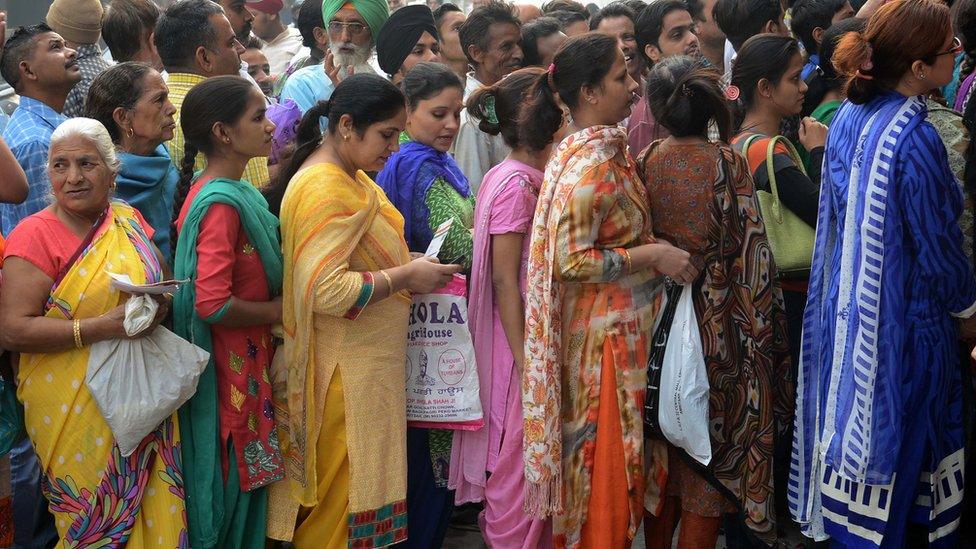
Indians were forced to queue up in large numbers at banks across the country
India's attempt to flush out undeclared wealth did not work, central bank figures show. The move, known as "demonetisation", was a flagship policy of Prime Minister Narendra Modi. Economic analyst Vivek Kaul looks at what went wrong.
The devil, as they say, is in the detail.
On page 195 of this year's Reserve Bank of India (RBI) annual report, external lies the answer to the question many Indians have been asking for close to 10 months.
Has demonetisation been a success or a failure? As per the RBI data, it's safe to say that demonetisation has been a failure of epic proportions.
On 8 November last year, the Modi government decided to demonetise 500 ($7; £6) rupee and 1,000 rupee notes, which were worth 15.44tn rupees in total. The idea was to target both counterfeit currency and "black money", or unaccounted wealth, the prime minister told the nation. This was backed up by the government press release accompanying the decision. Black money is essentially money that has been earned but on which taxes haven't been paid.
Old 500 and 1,000 rupee notes went out of circulation in a few hours
At midnight, just hours after the announcement, the 500 and 1,000 rupee notes were worthless. People holding these notes had to deposit them in their bank accounts. This money could later be withdrawn, though there were restrictions on the amount of money that could be withdrawn immediately.
The hope was that black money held in the form of cash wouldn't be deposited into banks, given that people holding it wouldn't want to be identified - in the process, a vast amount of illegal money would be destroyed.
But the RBI report tells a different story.
It says that illegal notes worth 15.28tn rupees ($242bn) had been deposited in banks up to 30 June. This basically means that almost 99% of the "demonetised" money was deposited into banks. Hence, almost all the black money held in the form of cash also made it back into the banks and wasn't really destroyed, as had been hoped.
The conventional explanation for this is that most people who had black money found other people, who did not have black money, to deposit their savings into the banking system for them.
As far as detecting counterfeit currency is concerned, nothing much seems to have happened on this front either. Data from the RBI annual report tells us that the total number of fake 500 rupee (old series) and 1,000 rupee notes detected between April 2016 and March 2017 was 573,891.
The total number of notes withdrawn stood at 24.02bn. This basically means that as a proportion, the counterfeit notes identified between April 2016 and March 2017 represent close to 0% of the withdrawn notes.
In the previous year, the total number of counterfeit 500 and 1,000 rupee notes detected stood at 404,794. And this happened without any demonetisation.
Hence, demonetisation has failed in its two major objectives.
The funny thing is that there were no estimates of how much black money was held in the form of cash. The government admitted as much, after having announced the policy. Finance Minister Arun Jaitley said so in a written reply to a question in the lower house of parliament, the Lok Sabha, on 16 December 2016.
Raids carried out by the Income Tax Department suggested that people tended to hold about 5% of their black money in the form of cash.
But even this lack of data in the public domain did not stop economists from coming up with their own sets of numbers, trying to defend the decision of the Modi government, and failing to explain what logic they based their assumptions on.
India's large cash economy was badly hit by the policy.
Even the Bharatiya Mazdoor Sangh (the labour wing of the governing Bharatiya Janata Party) admitted: "As many as 250,000 units in the unorganised sector were closed and the real estate sector was badly affected, with a large number of workers losing their jobs."
Agriculture, a sector which largely operates on cash, was hard hit too, with farmers not being paid enough for vegetables and pulses they had grown. Many protested and several state governments waived payments on farm loans.
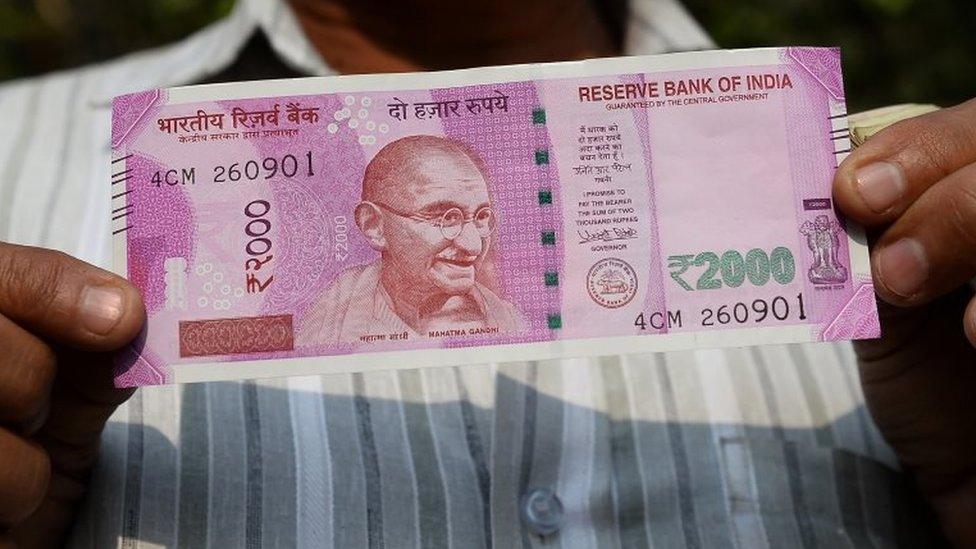
New 2,000 rupee denomination notes were introduced
Over and above this, the government's policy caused a huge cash shortage, with people having to spend many days standing in ATM lines trying to withdraw their own money. Some even died in the process.
As far as the Modi government is concerned, it is unlikely to admit it was a big mistake and will continue to put a positive spin on it, as it has since last November. Things will not change on that front.
To conclude, no relatively healthy economy has ever carried out demonetisation.
As the latest Economic Survey of the government of India points out: "India's demonetisation is unprecedented in international economic history, in that it combined secrecy and suddenness amidst normal economic and political conditions. All other sudden demonetisations have occurred in the context of hyperinflation, wars, political upheavals or other extreme circumstances."
The real costs of this unprecedented event are only just starting to come out.
Vivek Kaul is the author of India's Big Government - The Intrusive State and How It is Hurting Us.
- Published10 November 2016
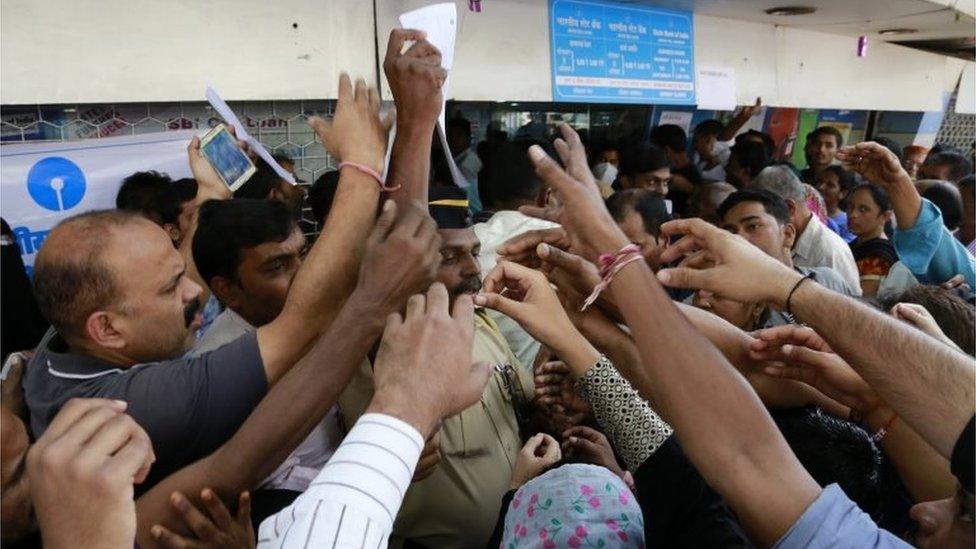
- Published14 November 2016
- Published17 November 2016
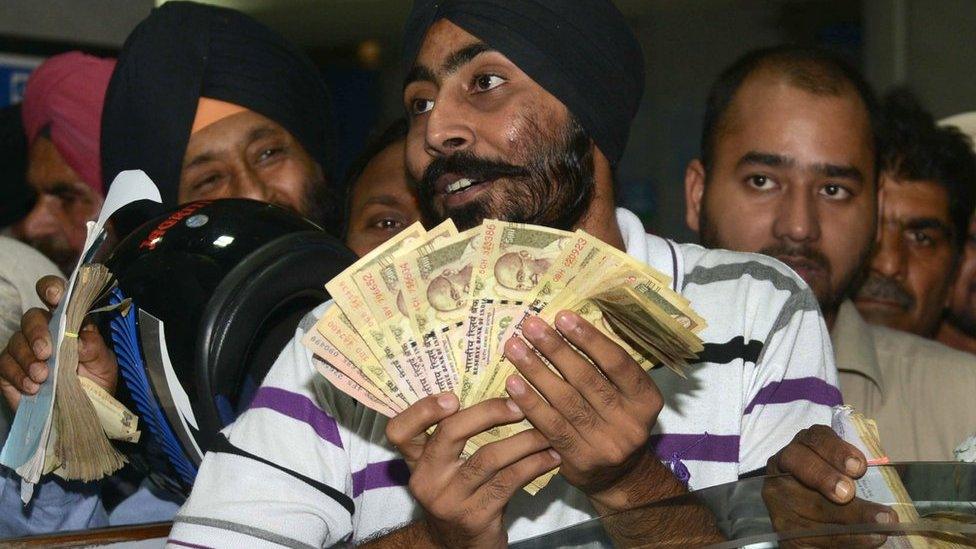
- Published11 November 2016
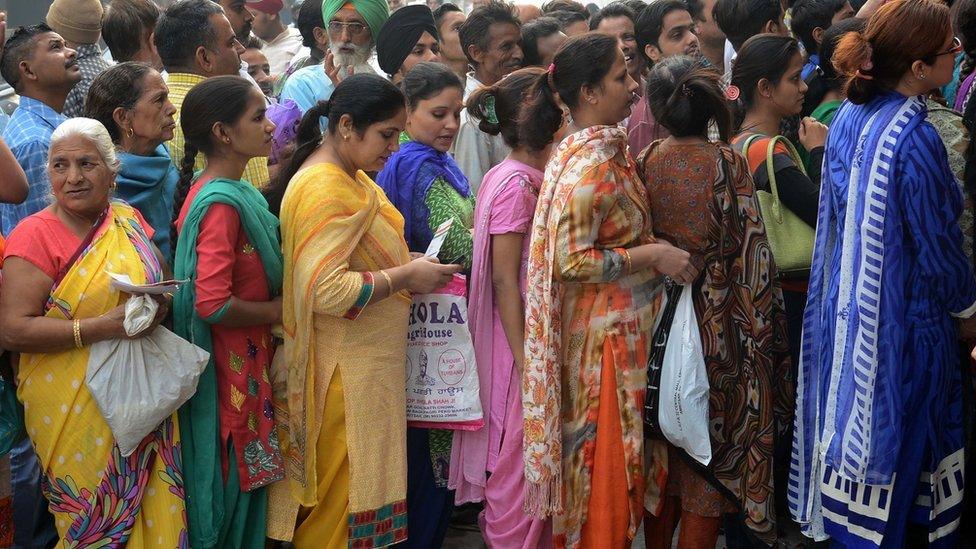
- Published24 November 2016
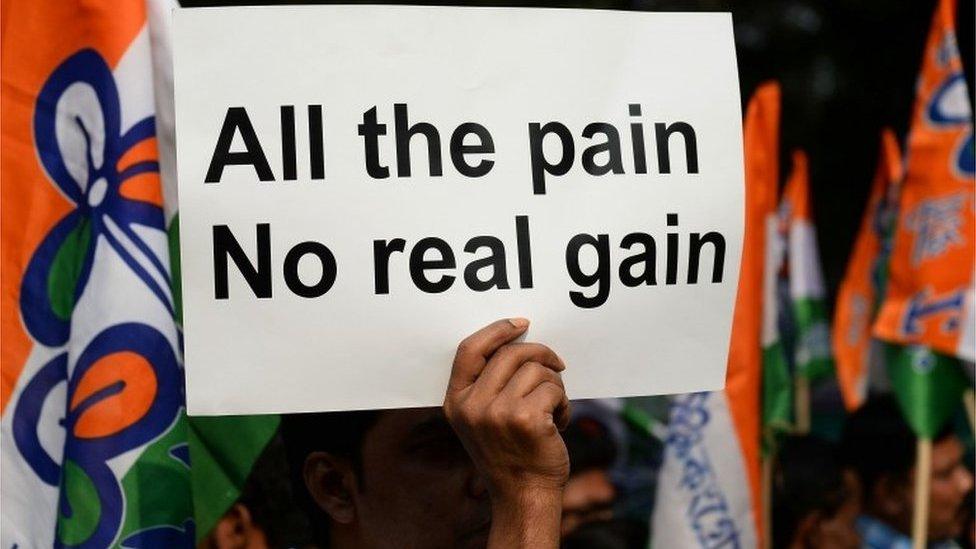
- Published10 November 2016
